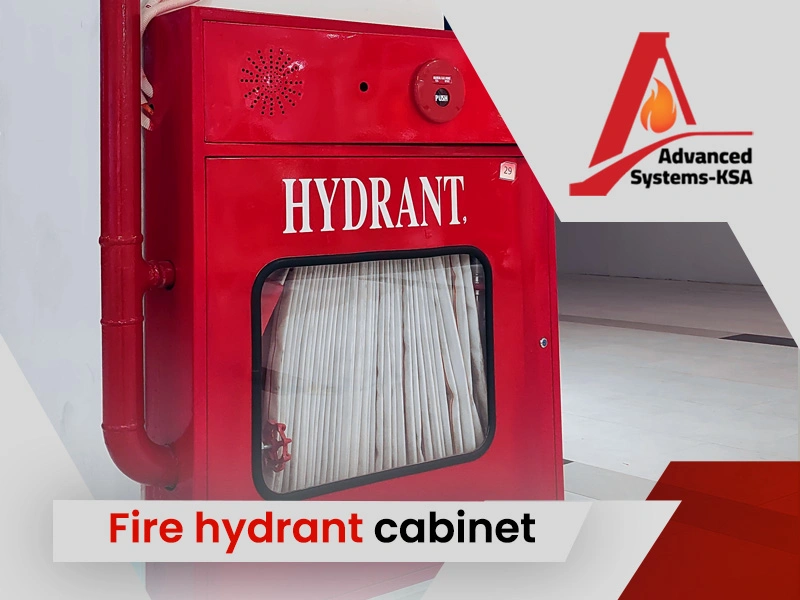
by Ahmed Amin | Mar 27, 2024 | Events
A fire hydrant cabinet is a specialized enclosure designed to house and protect fire hydrants and their associated equipment. It is typically installed in easily accessible spaces to provide easy access to the fire hydrant in case of a fire emergency. The cabinet is usually made of metal and is designed to withstand harsh environmental conditions. In this article, we will explore the importance of fire hydrant cabinets, where they should be installed, the different types available, and their pricing considerations.
Fire Hydrant Cabinets Overview
Fire hydrant cabinets are designed to house and protect fire hydrants, which are vital firefighting equipment. These cabinets are typically made of durable materials such as metal or fiberglass, ensuring their durability and resistance to harsh environmental conditions. By providing secure housing for fire hydrants, these cabinets prevent damage, tampering, and obstruction, ensuring that the hydrants are always ready for use when needed.
The purpose of a fire hydrant cabinet is to protect the fire hydrant from damage, vandalism, and exposure to the elements. It ensures that the hydrant remains accessible and functional when needed. The cabinet is usually equipped with a door or a cover that can be opened to access the hydrant.
Fire Hydrant Cabinet Types
Various types of fire hydrant cabinets are available to suit different needs and environments. The most common types include recessed cabinets, surface-mounted cabinets, and semi-recessed cabinets.
Recessed Cabinets
These cabinets are designed to be installed within the wall, providing a flush appearance. Recessed cabinets are ideal for buildings with limited space or aesthetic considerations. They offer a clean and unobtrusive look while still providing easy access to the fire hydrant.
Surface-Mounted Cabinets
As the name suggests, surface-mounted cabinets are attached directly to the wall surface. These cabinets are relatively easy to install and maintain. They protrude from the wall, ensuring high visibility and accessibility. Surface-mounted cabinets are commonly used in industrial settings, parking garages, and outdoor locations.
Semi-Recessed Cabinets
This type of cabinet combines the features of both recessed and surface-mounted cabinets. It is partially embedded within the wall, providing a streamlined appearance while still offering enhanced visibility and accessibility. Semi-recessed cabinets are often favored in commercial buildings and public spaces.
Outdoor enclosures
In some cases, fire hydrants may be housed in larger outdoor enclosures, especially in areas where protection from environmental elements or vandalism is necessary. These enclosures can vary widely in size and design, ranging from simple metal boxes to more elaborate structures.
Read About: Fire hydrant manufacturers
Fire hydrant cabinet components
Inside the fire hydrant cabinet, you may find various components and equipment, such as:
- Fire Hose: A length of fire hose is often stored inside the cabinet. This hose is connected to the fire hydrant and is used by firefighters or trained personnel to deliver water to extinguish fires.
- Nozzle: A nozzle is attached to the end of the fire hose. It helps control the flow and direction of water when fighting fires.
- Wrenches: Specialized wrenches are often kept in the cabinet to open and close the valves on the fire hydrant. These wrenches are used to control the water supply and regulate the pressure.
- Signage: Fire hydrant cabinets usually have visible signage indicating their location and the presence of a fire hydrant. This helps firefighters and emergency responders quickly locate and access the hydrant during emergencies.
- Locking Mechanism: Some fire hydrant cabinets are equipped with a locking mechanism to prevent unauthorized access or tampering. This ensures that the equipment remains secure and ready for use when needed.
Where Should The Fire Hydrant Cabinet Be Located?
The specific location of a fire hydrant cabinet may vary depending on local regulations and building codes. The following are important considerations for the placement of the cabinet:
Accessibility
Fire hydrant cabinets should be easily accessible to firefighters and emergency responders. They should be located in areas where they can be quickly located and accessed during a fire emergency. Typically, they are placed at a visible and convenient location near the fire hydrant itself.
Visibility
The cabinet should be visible and identifiable, especially in crowded or complex environments. It should be located in an area where it can be easily seen and recognized, either through signage or distinctive markings.
Protection
The cabinet should be positioned in a way that protects it from physical damage, vandalism, and environmental elements. It should be placed in a secure area, away from potential obstructions or hazards.
Proximity to the hydrant
The fire hydrant cabinet should be near the fire hydrant it serves. This allows for easy access to the hydrant and the associated equipment stored inside the cabinet.
Local regulations
It’s important to consult local fire codes and regulations specific to your area. These regulations might specify requirements for the placement of fire hydrant cabinets, including height, distance from walls or other structures, and other considerations.
Factors Affecting Fire Hydrant Cabinet Price
The price of fire hydrant cabinets can vary depending on factors such as material, size, design, and additional features. The size of the cabinet also plays a role in determining the price, with larger cabinets typically costing more due to the increased material requirements. Cabinets with additional features such as locks, alarms, or weatherproofing may also come at a higher price point.
In conclusion, fire hydrant cabinets are an essential component of fire safety infrastructure. They provide protection, accessibility, and visibility for fire hydrants, ensuring their readiness during emergencies. Proper placement of fire hydrant cabinets is crucial, following local fire safety codes and regulations. Different types of fire hydrant cabinets can be installed according to the type of property.
By investing in high-quality fire hydrant cabinets from Advanced Systems, individuals and organizations can enhance fire safety measures and protect lives and property in the event of a fire. Contact us now and get your consultation.
Read More:
Fire Hose Cabinet Price
Fire water booster pump
Fire Alarm Types
Foam Firefighting Equipment
Fire Cabinet Hose Suppliers
The Foam Fire Suppression
Fire Hose Cabinet Types
The Fire Alarm Devices
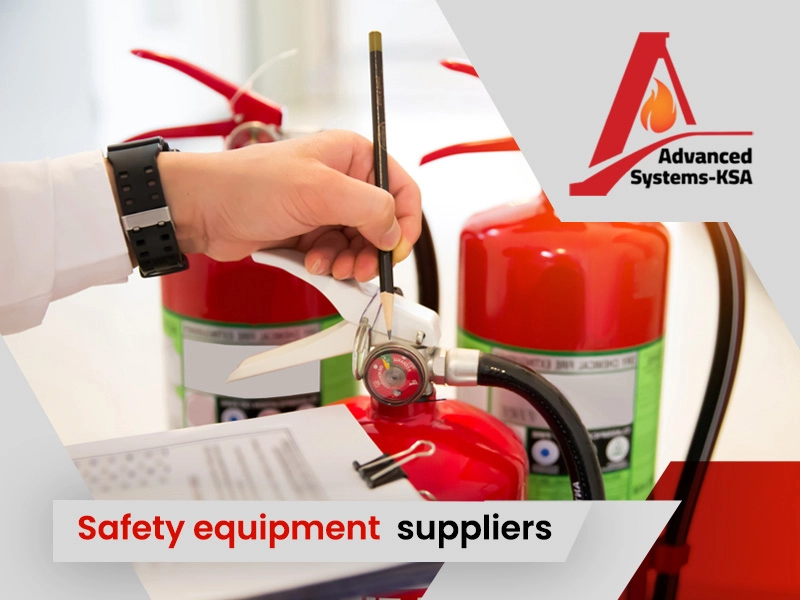
by Ahmed Amin | Mar 27, 2024 | Events
Seeking collaboration with fire safety equipment suppliers is an essential step for many properties, such as commercial buildings, industrial facilities, and residential areas, to ensure the highest safety level. These suppliers have an important role in sourcing, recommending, and providing essential fire safety gear to protect lives and property from the devastating effects of fires.
This article discusses how to choose the best safety equipment suppliers and explores the types and the most important safety equipment you have to take into consideration.
Types of Fire Safety Equipment
Fire extinguishers
Fire extinguishers provided by fire safety equipment suppliers are one of the most vital safety equipment available. These pieces of equipment are portable devices designed to suppress and extinguish small fires in their early stages, preventing them from spreading and causing further damage. There are various types, each specially designed to combat specific types of fires based on the fuel involved. The following are common types:
-
- Water Extinguishers: Suitable for Class A fires involving ordinary combustible materials such as wood, paper, cloth, and some plastics. They work by cooling the fire and reducing its heat energy. On the other hand, water extinguishers mustn’t be used for fires involving flammable liquids, electrical equipment, or cooking oil fires, as they can cause electrocution or spread the fire.
- Foam Extinguishers: They are effective for both Class A and B fires. They create a foam blanket, which helps smother the fire and prevent re-ignition. Class A indicates fire caused by the mentioned materials above, while class B involves flammable liquids, such as gasoline and oil, which can be tackled using foam extinguishers. They should not be used on electrical fires.
- CO2 (Carbon Dioxide) Extinguishers: They are suitable for Class B and Class C fires. Class C fires are dangerous because electrical equipment, appliances, and wiring cause them. CO2 extinguishers contain carbon dioxide gas that displaces oxygen, thus smothering the fire. CO2 extinguishers are commonly used to extinguish fires caused by flammable liquids and electrical equipment. They do not leave any residue after use, making them ideal for areas where cleanup is a concern.
- Dry Chemical Extinguishers: These types are versatile and can be used on various types of fires. They are effective for all mentioned classes of fires. They use a dry chemical powder, such as monoammonium phosphate or sodium bicarbonate, to interrupt the chemical reaction of the fire.
- Wet Chemical Extinguishers: They are specifically designed for Class F fires involving cooking oils and fats. These Extinguishers work by creating a cooling effect and forming a soapy layer that suppresses the fire and prevents re-ignition. These types are commonly found in commercial kitchens, restaurants, and other areas where cooking appliances are present, such as hotels.
Fire Alarms and Detection Systems
Early detection of fires is critical for timely evacuation and intervention. Fire safety equipment suppliers such as “Advanced Systems” provide a variety of Fire alarms and detection systems, including smoke detectors, heat detectors, flame detectors, and fire alarm control panels. These systems provide early warnings by detecting the presence of smoke, heat, or flames, allowing occupants to respond quickly and escape safely.
Fire Suppression Systems
Fire suppression systems are designed to suppress or extinguish fires automatically. They include sprinkler systems, foam suppression systems, and gas-based systems. These types of systems are particularly valuable in huge facilities such as malls, schools, factories, and universities or areas where manual extinguishment may not be feasible.
Role of Fire Safety Equipment Suppliers
Fire safety equipment suppliers have a critical role in ensuring effective fire safety measures for their clients, including businesses, organizations, and individuals. The following are the key roles performed by them:
Product Selection and Expertise
Fire safety equipment suppliers possess in-depth knowledge of fire safety products and their applications. They provide consultations for the unique requirements of every facility and recommend the most appropriate fire safety equipment.
They also take into consideration factors such as the type of fire hazards present, the size and layout of the space, and the regulatory compliance requirements.
Fire Safety Regulations and Compliance
Fire safety equipment suppliers stay updated on fire safety codes and regulations. At Advanced Systems, we ensure that the products they offer meet the required standards and certifications. By working with compliant suppliers, you can have confidence in the effectiveness and reliability of the fire safety equipment provided.
Installation and Maintenance Services
Fire safety equipment suppliers often provide installation, inspection, and maintenance services for the fire safety equipment they supply. These companies ensure the proper installation of the systems. They also conduct regular inspections and undergo maintenance to keep the equipment in optimal working condition.
Emergency Planning and Consulting
Some suppliers may provide additional services such as emergency planning and consulting. They can assist customers in developing comprehensive fire safety plans, including evacuation procedures, fire drills, and emergency response protocols. Suppliers may also offer guidance on the placement and positioning of fire safety equipment to ensure maximum coverage and accessibility.
Ongoing Support and Customer Service
Reliable fire safety equipment suppliers prioritize customer support and service. They are available to address any questions, concerns, or issues that their customers may have regarding the safety equipment they have purchased.
They may also provide technical support, troubleshooting assistance, and guidance on equipment upgrades or replacements. By taking this step, they build long-term relationships with their customers.
Factors to Consider When Choosing a Fire Safety Equipment Supplier
When selecting a fire safety equipment supplier, there are several essential factors to consider:
Reputation and Experience
Choose a supplier with a solid reputation and years of experience in the industry. Look for testimonials, reviews, and references from satisfied customers to gauge their reliability and professionalism. A supplier like Advanced Systems invests in its technical team to keep updated with the latest industry trends and technologies, thus providing professional services with its reputation in Egypt and the KSA.
Quality and Certification
Ensure that the supplier provides fire safety equipment of exceptional quality, adhering to recognized industry standards and certifications. Trustworthy suppliers provide safety equipment from manufacturers known for their commitment to quality and reliability.
Advanced Systems is one of the suppliers that ensures that its products meet the highest standards, offering cost-effective solutions to protect lives, properties, and assets from the dangers of fire and its consequences.
Support and Training
You should consider suppliers who offer ongoing support and training to their customers. This includes assistance with installation, regular maintenance, and providing training programs and resources that empower individuals to use and maintain fire safety equipment.
In conclusion, fire safety equipment suppliers such as Advanced Systems play an important role in safeguarding lives and property from the destructive impact of fires, enabling individuals and organizations to implement effective fire safety measures by providing a wide range of fire safety equipment.
Choosing the right supplier ensures access to high-quality, compliant products and the peace of mind that comes from knowing that the fire safety equipment is reliable and ready to protect in case of emergencies.
Read More:
Firefighting Company in Saudi Arabia
Fire Alarm Control Panel
Firefighting Systems
Fire protection products
Fire Fighting Gas Systems
Fire Hydrant Pump Prices
Fire Hose Cabinet Price
Fire water booster pump
Fire Alarm Types
Foam Firefighting Equipment
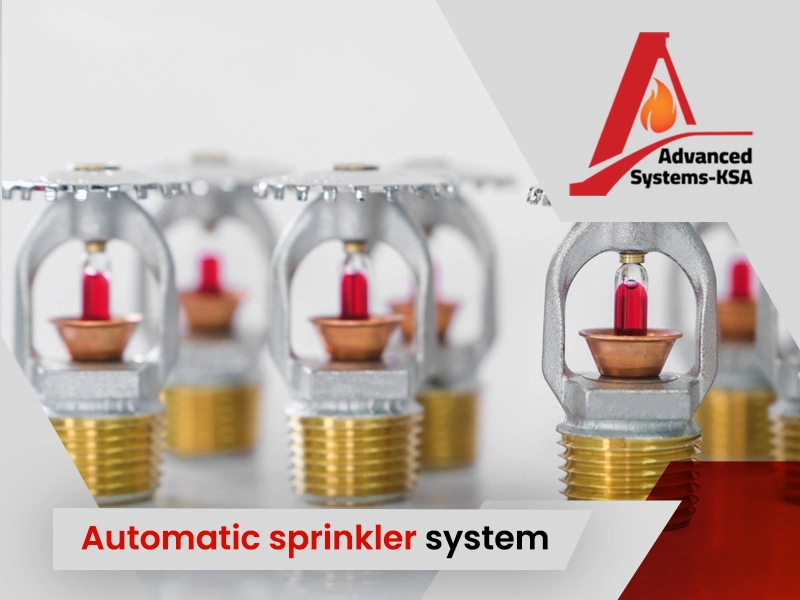
by Ahmed Amin | Mar 27, 2024 | Events
A sprinkler system is a network of pipes, valves, and sprinkler heads designed to distribute water over a specified area. It can be divided into two types: manual or automatic sprinkler systems. Automatic fire sprinkler systems are designed to detect and extinguish fires very quickly to minimise damage and save lives.
This article highlights how automatic fire sprinkler systems work and how professional suppliers install them as “Advanced Systems.”.
Automatic Fire Sprinkler Systems Mechanism
When a fire starts, the automatic sprinkler system starts automatically pumping a massive amount of water over the fire to extinguish it quickly and prevent more damage. The following is an overview of how these systems work:
Read More About: Firefighting Company in Saudi Arabia
1: Detection and Activation
An automatic sprinkler system has heat-sensitive elements such as fusible links or glass bulbs filled with heat-sensitive liquid. When the temperature in the affected area rises, the elements are activated and trigger the releasing mechanism of the sprinkler head.
2: Water Releasing
There should be several sprinkler heads distributed in the facility to ensure safety. Each sprinkler head is activated individually and then releases water only to the affected area. Several heads may be activated automatically when the fire occurs on a large scale.
3: Distribution
Water flows through the system pipes to the activated sprinkler head. Water is then dispersed from small openings or nozzles in the head.
4: Fire Control
This system aims to control the fire by releasing the water at the base of the fire, helping to extinguish it or control its spread until firefighters arrive.
5: Work Harmoniously With Alarm
In many firefighting systems, the activation of a sprinkler head also triggers an alarm system to alert occupants and initiate an emergency response to the fire.
Automatic Sprinkler System Components
Any automatic sprinkler system consists of the following components that work together to detect and suppress fires:
The Water Supply
Water supply is considered the core of the system for extinguishing fires. A municipal water supply or a water tank can provide it. There must be sufficient pressure and flow rate to meet the system’s requirements.
Sprinkler Heads
They are the visible part of the system and are responsible for dispensing water when a fire is detected. They are distributed within the facility and are activated when exposed to a certain level of heat. There are different types of sprinkler heads:
- Pendant heads hang from the ceiling, and they are the most common type.
- Upright heads that are mounted vertically.
- Sidewall heads are for areas where ceiling-mounted sprinklers are not suitable.
Pipe Network
Pipes distribute water from the water supply to the sprinkler heads to be released. They come in different sizes and types. They can be made of plastic, steel, or copper. They are also installed on the property according to specific calculations made by specialists to ensure adequate water flow to each sprinkler head.
Valves
The valves control the flow of water within the system. The main control valve is located near the water supply connection, and it allows manual shut-off of the water supply. There are other valves named zone control valves that are installed to divide the system into zones, allowing for localised control and maintenance without disrupting the entire system’s operation.
Alarms
Automatic sprinkler systems have alarm devices to alert occupants and responsible people to a fire event. The alarms can be audible or visual indicators. These devices are triggered when the sprinkler heads activate.
Read About: Fire Alarm Control Panel
Control System
This system manages the operation and monitoring of the sprinkler system. It includes a control panel that receives signals from various sensors and activates the appropriate sprinkler heads.
Modern systems incorporate advanced features such as remote monitoring, integration with building management systems, and connectivity for real-time notifications.
Other Support Equipment
There are other equipment and tools that may be required to support the operation of this system, and they include:
- Water pumps to boost water pressure.
- Backflow prevention devices to ensure the integrity of the water supply
Automatic sprinkler system installation
Automatic sprinkler system installation requires careful planning, adherence to building codes and regulations, and attention to detail. Advanced Systems’ experts consider the following steps in the installation process:
- Design and planning by assessing the building’s layout, identifying fire hazards, performing hydraulic calculations, and developing a comprehensive design plan for the sprinkler system.
- Determining and connecting the water supply for the sprinkler system. Then, pipes will be installed to distribute water throughout the premises. The material layout and the size of the pipes are carefully chosen according to hydraulic calculations to ensure adequate water flow and pressure for all sprinkler heads.
- Installing sprinkler heads throughout the building based on the design plan. They are positioned in planned locations to ensure optimal coverage. Their types are chosen depending on specific requirements for each area.
- Installing valves to isolate specific zones and control the water flow. Then, there is the control system, which includes control panels and alarm devices.
- Testing and commissioning once the installation is complete. This includes conducting flow tests, pressure tests, and functional tests of individual sprinkler heads and the entire system. Any issues or deficiencies are addressed and corrected during this phase.
Automatic fire sprinkler systems maintenance
Experts at Advanced Systems strongly recommend regular maintenance to ensure the optimal functioning of sprinkler systems. This should include:
- Testing and checking the system as per the manufacturer’s guidelines and applicable regulations.
- Replacing or repairing damaged system components such as sprinkler heads, valves, and control panels.
In conclusion, automatic fire sprinkler systems in firefighting systems are essential for quick action in case of fire accidents. Advanced Systems, with its expertise, emphasises the significance of regular maintenance to uphold optimal functionality. Contact us now and get a consultation.
Read Also:
Safety Companies In Saudi Arabia
Types of Fire Hydrants
The fire hose storage Box
Fire Protection Systems
Fire Hose Reel System
Fire Hydrant Pump Prices
Fire suppression companies
Types of Fire Alarm Systems
Fire Hose Cabinet Price
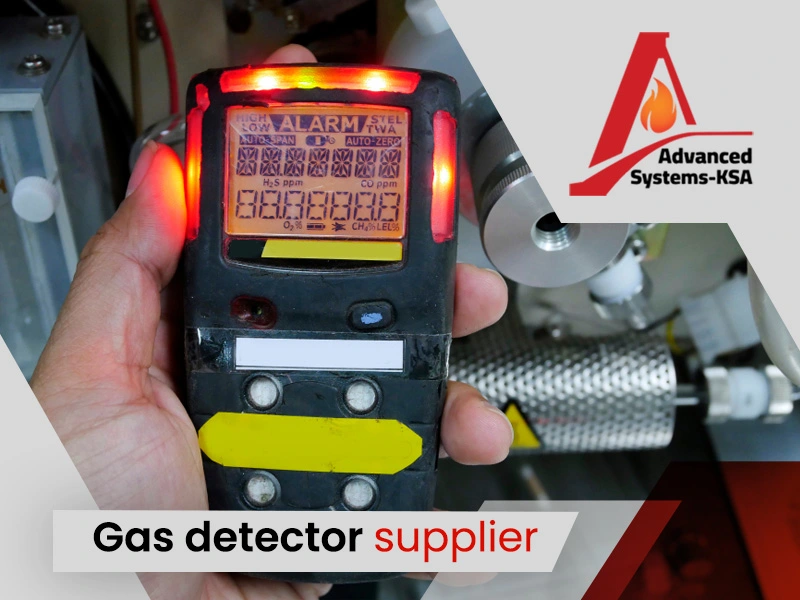
by Ahmed Amin | Mar 27, 2024 | Events
Gas detectors are devices that detect gas leakages in the surrounding environment. It’s mainly used in laboratories and industrial and residential areas to monitor air quality and ensure people’s safety. Selecting the appropriate detector for your area from a reliable gas detector supplier is important to ensure your facility’s safety.
This article explores the functions and types of gas detectors and the considerations to take when choosing a supplier.
What is a Gas Detector?
A gas detector is a device manufactured to detect the leakage of specific gases in the surrounding air. It measures gas concentrations and alerts when levels exceed the predetermined threshold. These detectors are very important when monitoring the area’s safety, environmental conditions, and industrial processes. Gas detector suppliers provide several types; each is designed to detect different gases.
Functions of Gas Detectors
Gas detectors have many functions, including:
- Gas Detection: As its primary function, it detects the presence of specific gases in the air, such as flammable gases, toxic gases, or oxygen deficiency.
- Produce Early Warning: Gas detectors deliver early warning of potential dangers by alerting users to the increased levels of gases before they reach dangerous levels.
- Ensure safety: Monitoring gas levels in workplaces and industrial areas allows for prompt action to prevent exposure to hazardous gases.
- Environmental Monitoring: Any gas detector supplier will tell you that gas detectors help monitor environmental conditions, such as air quality, in indoor and outdoor settings to comply with safety regulations and protect public health.
- Process Control: Gas detectors are used in industrial applications for process control to maintain safe operating conditions and prevent accidents.
- Alarm Trigger: The gas detectors activate alarms, whether they are sounds, lights, or remote alarms, to alert people for emergency response when gas concentrations rise, thus quickly requiring evacuation or intervention.
Types of Gas Detectors
When consulting a gas detector supplier, he will tell you that gas detectors operate based on various sensing technologies, each of which detects specific types of gases. Here are some common types:
Catalytic Bead Sensors
This type of gas detector is provided by a gas detector supplier as “Advanced Systems” for the detection of flammable gases like methane and propane. They contain a platinum wire coil coated with a catalyst that promotes combustion.
In cases of increased gas concentration and gas contact with the bead, it causes oxidation, causing a change in resistance, which the detector measures.
Infrared (IR) Sensors
IR gas detectors work by measuring the absorption of infrared radiation by gases. They can be used to detect gases like carbon dioxide, methane, and hydrocarbons. They work by measuring the decrease in intensity when gas molecules absorb specific wavelengths of IR light, allowing it to determine gas concentration.
Electrochemical Sensors
These types can detect toxic gases such as carbon monoxide, chlorine, and sulfur dioxide. They generate a chemical reaction between the target gas and an electrolyte solution and produce an electrical current proportional to the gas concentration.
Photoionization Detectors
They are used to detect volatile organic compounds and other gases that can be ionized by ultraviolet light. After the gas molecules’ exposure to UV light, they ionize, creating charged particles that generate a current, which the detector measures.
Metal Oxide Semiconductor Sensors
These types of sensors are used to detect gases like carbon monoxide and hydrogen. They consist of a semiconductor material that reacts with gases, changing its conductivity and thus allowing the detection of gas concentrations.
Ionization Chambers
These detectors are mainly used to detect ionizing radiation. However, it can also be used to detect some gases with high ionization potentials, like radon.
Acoustic Sensors
These types of detectors act as safeguards for the area by detecting the sound produced by escaping gas. They are used with other types of detectors mentioned above for greater safety.
Choosing the Right Gas Detector Supplier in The KSA
There are several factors that you should consider while selecting the appropriate gas detector supplier, such as:
- Gas Detectors Quality and Reliability: You should look for a gas detector supplier known for their products’ quality and reliability.
- Product Range and Customization: You should look for a supplier that provides a wide range of gas detectors that are suitable for different needs. You should also consider if they can provide customized solutions to meet specific requirements.
- After-Sales Support: Make sure that providers offer excellent customer service and technical support.
- Well-Reputed: Seek customer reviews and testimonials. Choose suppliers with positive feedback and satisfied customers.
Advanced Systems: Gas Detector Supplier In Saudi Arabia
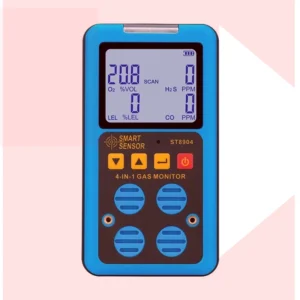
Gas Detector
Advanced Systems is a reputable gas detector supplier in the Saudi Arabian market. We focus on delivering high-qualitya firefighting nd fire alarm systems, including gas detectors. At Advanced Systems, we take pride in our strong technical team, capable of providing you with the optimal solutions for fire protection in your assets, projects, and facilities.
Why Choose Advanced Systems?
The following reasons reveal why you collaborate with us:
- Offering comprehensive solutions suitable for your specific needs.
- Have deep experience in the fire protection industry. Our technical team undergoes regular training to stay up to date with the latest technologies and systems and provide you with the best possible support and service.
- Prioritizing quality in everything we provide. Our gas detectors are sourced from reliable manufacturers and comply with industry standards.
- Expanding our network in the Middle East and Africa as we aim to be one of the leading companies in the region.
Before choosing the right gas detector supplier in Saudi Arabia, you should have a background in the functions and types of gas detectors, thus making an informed decision. Remember to consider factors such as quality, product range, after-sales support, supplier reputation, and maintenance. Choose Advanced Systems as your gas detector supplier and guarantee high-quality gas detectors. Contact us now!
Read More:
Fire Hydrant Pump Prices
Fire Hose Cabinet Price
Fire water booster pump
Fire Alarm Types
Conventional Fire Alarm Panels
Foam Firefighting Equipment
Fire Cabinet Hose Suppliers
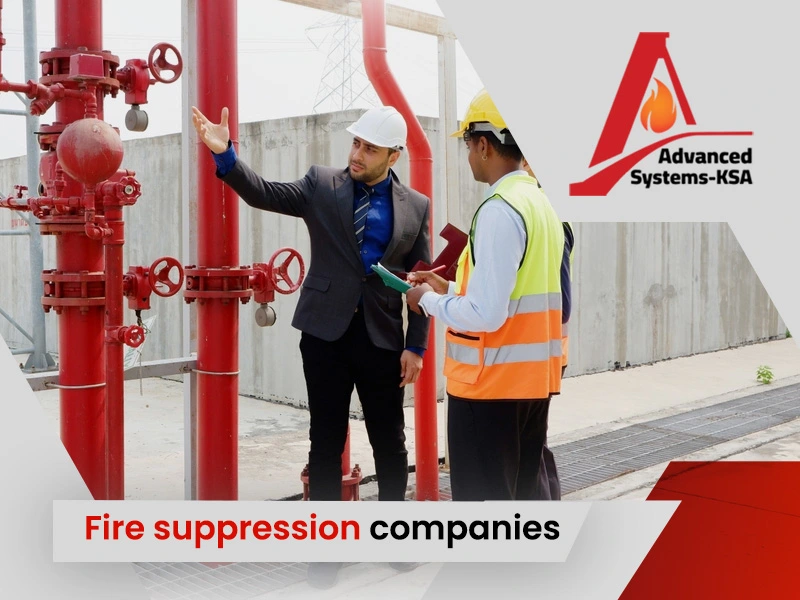
by Ahmed Amin | Mar 27, 2024 | Events
Fire suppression companies in Saudi Arabia, In the arid climate of Saudi Arabia, where temperatures soar and fire hazards abound, the role of the fire suppression industry is paramount. Saudi Arabia’s commitment to protecting lives and property against the ravages of fire is reflected in the proactive measures taken by both the government and fire suppression companies.
A Look into Saudi ِArabia’s Proactive Government Initiatives and Regulations in Fire Safety
Fire is a major threat to life and property in Saudi Arabia. The country’s hot, dry climate and rapidly growing population make it particularly vulnerable to fires. In recent years, there have been several large and destructive fires in Saudi Arabia, including the 2012 fire at the Al-Azizia Mall in Jeddah.
Read About: Best Of The Fire Alarm Devices
The Saudi government has taken some steps to improve fire safety in the country. In 2016, the government established the Saudi Arabian Fire Safety Association (SAFSA) to promote fire safety awareness and education. SAFSA provides training and certification programs for firefighters, fire safety engineers, and other professionals.
The government has also enacted many fire safety regulations. These regulations require buildings to have fire alarms, fire sprinklers, and other fire safety systems. They also require businesses to develop fire safety plans and to train their employees on fire safety procedures.
A flare of protection: The surging presence of fire suppression companies in Saudi Arabia
In Saudi Arabia, the rise of fire suppression companies marks a pivotal shift in the nation’s fire safety landscape. These companies, armed with expertise and cutting-edge technologies, stand as a bulwark against the destructive potential of fires.
Know More About: How to Choosing The Best Fire Sprinklers
This growing presence signifies a proactive approach to safeguarding lives and property from fire hazards. Fire suppression companies offer a comprehensive suite of services, including risk assessments, design, installation, and maintenance of tailor-made fire suppression systems. These systems, encompassing sprinklers, water mist, and gas suppression, cater to the specific needs of each client, collectively igniting a new era of safety and security across the Kingdom.
-
Fire suppression companies in KSA are promoting fire safety awareness
Fire suppression companies in KSA are actively promoting fire safety awareness and education through training programs and community outreach initiatives. These efforts empower individuals with the knowledge and skills to prevent and respond to fire emergencies effectively, contributing to a safer and more resilient society.
Fire suppression companies in KSA: providing technology-driven solutions for enhanced fire safety
Fire suppression companies are embracing the power of technology to proactively enhance fire safety outcomes and minimize risks.
-
Advanced Fire Detection Systems
One key area of focus is the deployment of advanced fire detection systems. These systems go beyond traditional smoke and heat detectors, utilizing features like multi-sensor detection and real-time data analysis to identify fire hazards at earlier stages, allowing for faster intervention and minimizing damage.
-
Smart monitoring solutions
Fire suppression companies are leveraging smart monitoring solutions to continuously monitor various building parameters like temperature, humidity, and air quality. This data is used to identify potential fire risks before they escalate, enabling preventative measures and targeted resource allocation.
Predictive analytics is another powerful tool employed by these companies. By analyzing historical data and real-time information, they can predict fire risks with greater accuracy, enabling proactive measures such as targeted inspections and maintenance in high-risk areas.
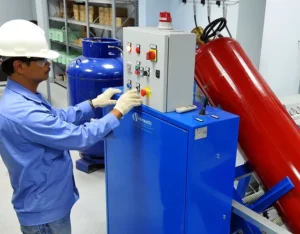
fire suppressions
Vital advice from Saudi fire suppression companies: awareness and prevention are Key
Here are some essential advices emphasized by Saudi fire suppression companies:
You should have a clear and well-defined fire evacuation plan in place. This plan should include designated evacuation routes, assembly points, and procedures for alerting authorities and occupants in the event of a fire.
-
Get a high-quality fire suppression system
Invest in quality fire detection and suppression systems tailored to the specific needs and requirements of each premises. Early detection of fires can significantly reduce response times and allow for timely intervention before the situation escalates.
-
Get the support from Fire suppression companies’ experts
Installing fire suppression systems is crucial, but the journey doesn’t end there. Regular maintenance and testing, including smoke detectors, fire extinguishers, and sprinkler systems, are essential to guarantee their proper functioning and reliability. Don’t let complacency set in – schedule regular maintenance and testing to ensure your fire safety systems are always ready to protect you.
If assistance is needed, reach out to “Advanced Systems” for expert advice and customized fire-fighting solutions, along with comprehensive fire system maintenance services.
Read More:
Fire hydrant and monitor
Firefighting Tools And Equipments
Fire protection products
Fire Hydrant Pump Prices
Fire Hose Cabinet Price
Fire Alarm Types
Conventional Fire Alarm Panels
Fire Cabinet Hose Suppliers
Foam Firefighting Equipment
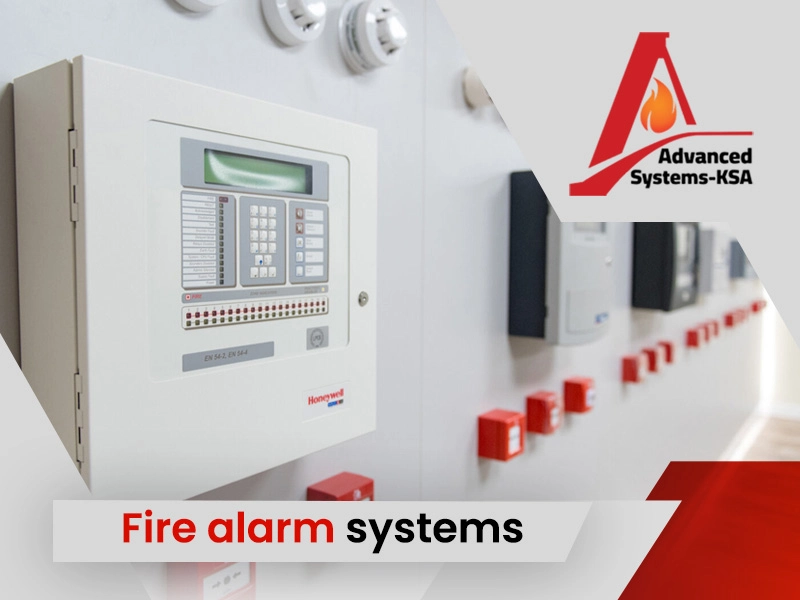
by Ahmed Amin | Mar 20, 2024 | Events
Fire alarm systems are indispensable safety tools, serving as crucial safeguards for both lives and property. Ranging from traditional wired setups to cutting-edge wireless solutions, a plethora of fire alarm systems are tailored to meet diverse needs and operational requirements. This article takes a closer look at the types of fire alarm systems and the essential considerations in selecting the ideal system for your residence or establishment.
What is a fire alarm system?
A fire alarm system is a network of interconnected components designed to detect and alert occupants of a building in the event of a fire or smoke-related emergency. The primary purpose of a fire alarm system is to provide early warning to occupants, allowing them to evacuate safely and enabling prompt response from emergency personnel. A typical fire alarm system consists of the following components:
- Fire detection devices such as smoke detectors, heat detectors, flame detectors, and gas detectors.
- Control panel, which activates alarms and triggers appropriate response actions, such as notifying occupants and emergency services.
- Notification devices include fire alarms, sirens, strobe lights, and voice evacuation systems.
- Manual activation devices allow individuals to manually trigger the fire alarm system by activating a button or breaking a glass.
- Monitoring system to allow 24/7 monitoring of the system, where trained operators can receive alerts and take appropriate actions.
read about: How Fire Alarm System Works
Types of Fire Alarm Systems
There are several types of fire alarm systems, each with advantages and disadvantages. The most common types include:
Conventional Fire Alarm Systems
Conventional fire alarm systems are basic yet widely used types of fire alarm systems. They are suitable for smaller buildings and simpler applications. These systems divide the protected area into zones, each connected to a specific circuit. Fire detection devices like smoke or heat detectors are installed within each zone.
When a fire event occurs, the device in the affected zone detects smoke or heat, triggering an alarm signal through the corresponding circuit. Conventional systems are known for their simplicity, cost-effectiveness, durability, and reliability.
However, they cannot pinpoint the exact fire location within a zone, potentially causing a delayed emergency response. They are also more susceptible to false alarms due to less sophisticated detection capabilities.
Addressable Fire Alarm System
Addressable fire alarm systems are advanced types of fire alarm systems that provide precise identification of fire locations. Each detection device, like smoke or heat detectors, has a unique address and connects to a central control panel through communication loops or circuits. When a device detects a fire, it sends a signal with its specific address to the control panel, pinpointing the fire’s exact location.
Addressable systems enable rapid response, facilitating quick evacuation and the efficient deployment of emergency teams. They can manage numerous devices, making them suitable for complex buildings. Additional features include event logging, remote monitoring, and integration with other systems for enhanced safety. These systems are more complex and expensive to install and maintain, but they offer superior functionality for precise fire detection and location identification in larger buildings or facilities.
Analog fire alarm systems
Analog fire alarm systems are advanced types of fire detection systems, offer enhanced sensitivity and precision. These systems use analog sensors to monitor environmental conditions for signs of fire continuously. Analog sensors analyze subtle variations in readings, allowing for early detection of potential fire hazards.
The sensor data is transmitted to a central control panel, enabling real-time analysis and differentiation between harmless changes and genuine fire threats, reducing false alarms. Analog systems provide detailed information about fire location and severity by analyzing data from multiple sensors, facilitating a targeted response. They offer flexibility, scalability, and integration with other building systems.
However, careful calibration and maintenance are necessary for optimal performance. Analog fire alarm systems are a valuable investment for buildings prioritizing safety.
Wireless Fire Alarm Systems
Wireless fire alarm systems are a flexible and modern solution for fire detection in buildings. Unlike traditional wired systems, they utilize wireless communication technology, eliminating the need for extensive wiring and making installation more cost-effective. In these systems, fire detection devices communicate wirelessly with a central control panel, sending signals when detecting fire or smoke.
Wireless communication ensures real-time transmission for accurate detection. The key advantage of wireless systems is their flexibility, allowing for easy installation and expansion without wiring limitations. They are suitable for temporary setups and retrofitting existing buildings, with minimal disruption and maintenance compared to wired systems.
However, signal range and potential interference should be considered. Overall, wireless fire alarm systems provide convenience, flexibility, and reliable performance for fire detection in various building environments.
Intelligent fire alarm systems
These types of fire alarm systems are advanced versions of addressable or analog systems. Harnessing sophisticated algorithms and advanced programming, they excel in analyzing data collected from a multitude of sensors and devices.
What sets intelligent fire alarm systems apart is their unparalleled ability to discern between false alarms and genuine fire events. By scrutinizing sensor data with precision, these systems significantly enhance reliability while simultaneously minimizing false alarm rates.
This heightened level of intelligence enables these systems to react swiftly and accurately to fire threats, ensuring timely responses that can mean the difference between minor incidents and catastrophic losses. Whether deployed in residential, commercial, or industrial settings, intelligent fire alarm systems offer a level of protection that is unmatched by their predecessors, setting a new standard for fire safety.
By understanding the various types of fire alarm systems, their functionalities, and your specific needs, you can make an informed decision and select the optimal system for your home or building.
Remember, prioritizing fire safety is an essential investment. Consulting a qualified firefighting solutions company as Advanced Systems can provide valuable guidance in choosing the right system and ensuring its proper installation and maintenance. Contact us now and get your consultation.
Read More:
Fire Hose Cabinet Types
Firefighting Tools And Equipments
Fire Water Pump Manufacturers
Fire Sprinklers Companies
Fire Hose Cabinet Price.
Fire Hydrant Pump Prices
Foam Firefighting Equipment
Page 1 of 612345...»Last »

